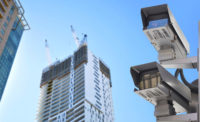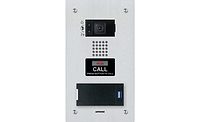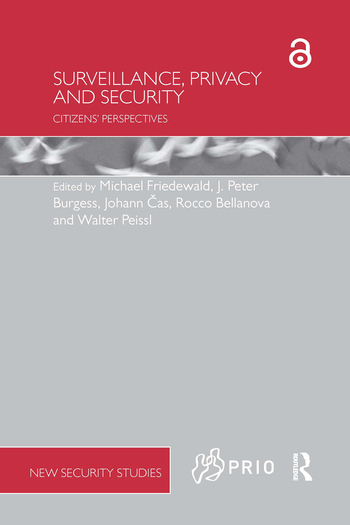Federated, Integrated Security Reaps Rewards for McCormick Place



The newly constructed Wintrust Arena on the McCormick Square campus is the home of the DePaul Blue Demons basketball teams, and it is frequently used for entertainment events and conferences. Photo by Abel Arciniega, Courtesy of Choose Chicago



With 2.6-million square feet of exhibit space, McCormick Place in Chicago is the largest convention center in the U.S. Located in the bustling South Loop neighborhood of Chicago, McCormick Place is an essential factor to the economic health of the city, attracting close to three million visitors every year.
“Given today’s climate regarding security, we have to be able to optimize our security presence on campus as much as possible,” says Frank Solano, Security Systems Manager for McCormick Place. “That means using technology and other tools to keep our visitors safe. We have instituted K9 Details, along with a dedicated Chicago Police Detail to support the 100+ security force. We are constantly increasing camera coverage on campus. In fact, we are currently undergoing a new camera install project on the south building which will add 60 new HD IP cameras outside meeting room locations that were lacking coverage. We are constantly looking towards new tech that will keep up ahead of the curve in the industry and make our security staff more efficient.”
In a behind-the-scenes tour for security media last month, Solano and Access Control Coordinator Brett Zelnio explained how a unified security platform from security solutions provider Genetec – integrated by Videotec – brings additional value to the growing McCormick Place campus, which includes multiple hotels and a new sports and entertainment arena.
Key to managing such a vast footprint is having a streamlined security management strategy. Through Genetec’s Security Center platform, McCormick Place was able to integrate video surveillance and access control into a single interface instead of three. This enables security personnel to retain a more holistic picture of operations on campus at any given time, including monitoring more than 700 cameras and 900 access readers. A map-based interface allows users to quickly locate and home in on problem areas via video, or lock or unlock whole swaths of the conference center at a time, which proves incredibly useful when tradeshows are moving in or out.
The new system also enables users to program lockouts or limited access to meeting rooms for clients. For example, if a pharmaceutical company wanted to rent a meeting room during an event for private demonstrations or discussions, they could request a “lockout,” so that company’s personnel (appropriately credentialed for the show by McCormick Place staff) could enter, or “limited access,” so that company’s personnel plus housekeeping or electricians could enter. Previously, this service would have been offered, but would have been a more manual, time-consuming process for operators, with more chances for user error. Through the new system, an operator can change the status of one room or a block of rooms, and then undo the lockout with just a few clicks after the show ends.
The increasing ease of use and reliability from the system is benefiting both operators and clients. While clients are expecting the highest level of security and service from McCormick Place, more show managers are asking security-focused questions, Zelnio says.
Throughout his 17 years working on the McCormick Place campus, Solano says that the typical shows coming through the venue are evolving from traditional tradeshow mainstays to more tech-focused shows put on by the likes of Microsoft, Adobe or Amazon.
“These tech shows pay special attention to security of their attendees, and we began to notice the increase of show managers presenting security plans,” he says. “Event managers work with show management, campus security and show-hired security consultants/contractors to provide a safe and enjoyable show experience to all their exhibitors and attendees.”
The security system also enables a wider audience to reap benefits, as upwards of 500 camera feeds are being shared with the City of Chicago’s Office of Emergency Management and Communications (OEMC). This project began with 32 federated cameras in 2007 during the West Building expansion at McCormick Place, and expanded from there. In 2014, when the new access control and video system was being designed, the Genetec system was chosen because it provided true integration between video and access, and also allowed McCormick Place to more easily federate video in both directions.
“We send all our Convention Center cameras and Arena cameras, and OEMC federates select camera feeds to our control room,” Solano says. “The benefit is we can now control a larger perimeter, with video access to surrounding roads and key intersections.” Those cameras might be owned by the city, but the OEMC enables operators at McCormick Place to utilize that video and monitor for risks and operational challenges around the campus. Solano adds that they also acquired two Motorola Mobile Camera Stations from the OEMC, which can be deployed in strategic locations and federate to OEMC through their cell network.
OEMC also participates in McCormick Place’s annual campus-wide drills, which include the tenants on campus (Hyatt & Marriott hotels), Chicago Fire Department, Chicago Police and EMS. The last major drill involved an active shooter situation in the new Wintrust Arena on the McCormick campus. The scenario had an active assailant escaping the Arena through the walkway to one of the campus hotels and then through to the conference center, requiring active communication and response from multiple tenants simultaneously as security personnel tracked the target in real-time across federated cameras through multiple buildings.
“The partnership between our agency and OEMC has been fruitful and harmonious,” Solano adds. “Ruben Madrigal (OEMC Deputy Director) has been instrumental the whole way. Future projects include partnering with other agencies to implement video analytics throughout the city.”
Looking for a reprint of this article?
From high-res PDFs to custom plaques, order your copy today!











